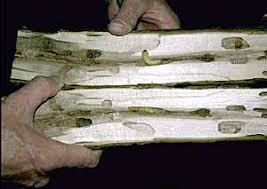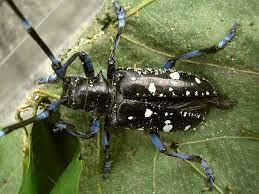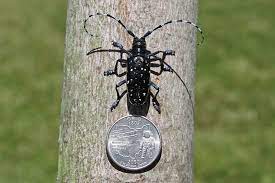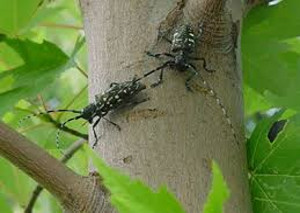Asian Longhorned Beetle - Life Cycle
Asian longhorned beetles develop though four life stages—egg, larva, pupa and adult. The adult female can lay up to 90 eggs,
one egg each at the bottom of irregular-shaped craters she chews in bark. In a lightly infested tree, these dime-sized,
egg-laying pits are more common near to the top of the tree and on larger branches. In a tree that is heavily infested, egg-laying
craters can be found on bark throughout the tree.
After hatching, the larva chews into the tree and feeds initially in cambium and sapwood, and later in heartwood. Larvae develop through five, increasingly larger instars (growth stages) before pupating in a chamber the mature larva chews in sapwood.
Adults emerge and mate, and the females lay eggs. Females feed on leaf midribs, leaf petioles, and twig bark. About 2 years are required to complete one generation in the eastern Untied States.
After hatching, the larva chews into the tree and feeds initially in cambium and sapwood, and later in heartwood. Larvae develop through five, increasingly larger instars (growth stages) before pupating in a chamber the mature larva chews in sapwood.
Adults emerge and mate, and the females lay eggs. Females feed on leaf midribs, leaf petioles, and twig bark. About 2 years are required to complete one generation in the eastern Untied States.






